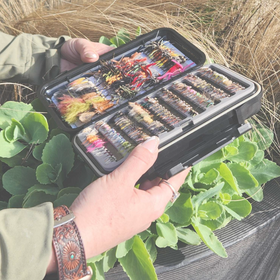The single biggest reason Parachutes are so popular is they are easy to see. The white wing is visible to the angler, and doesn't spook the fish. In the Prince Nymph has proved fish actually like the contrasting color of white. The most proven dry fly presentation in moving water is the drag free drift. Odds go way up when you can place your fly perfectly in a rising trout's feeding lane. This may be accomplished only if the fly is visible. Parachutes also always land right side up, and like the name indicates they have a soft landing on the water. They ride low in the water, which allows for easier hook-ups, and fewer missed strikes.
Because they ride so low Parachutes can be used as an emerger pattern as well, their tails are seen as the trailing shuck thrown of by emerging nymphs. They also can be used imitate spinners, their hackle is seen as imitating the horizontal wings of a fallen mayfly spinner.
Parachutes are mainly used to imitate mayfly hatches, but the Parachute Adams, can also be used to imitate caddis as well. In fact so popular is the Parachute Adams, that it was recently ranked in the top ten all-time trout flies in American Angler magazine. There are also Parachutes now available to imitate a wide range of insects, including hoppers, salmonflies, and terrestrials. Look for more additions to this popular line of flies from The Big "Y" Fly Co.




